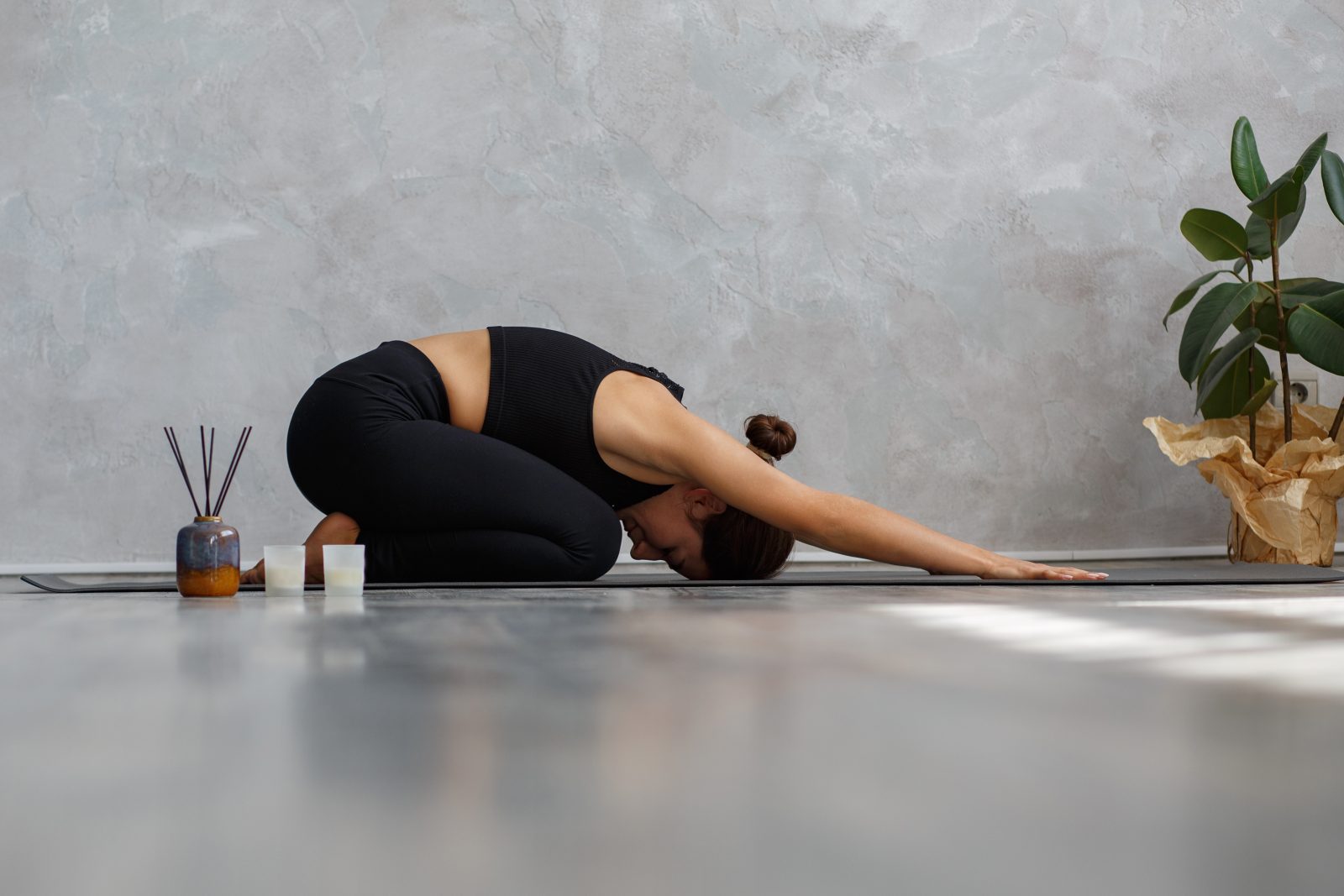Keep reading to find out which yoga positions are ideal for relieving endometriosis symptoms and how to get the most out of your yoga practice.
About 176 million people around the world suffer from endometriosis, a persistent gynecological ailment. It can happen to anyone at any age, but most often affects women between the ages of 15 and 49 (1), when they are in the prime of their reproductive years.
Those who are familiar with the discomfort of endometriosis can attest to its severity. Managing the pelvic pain that frequently accompanies endometriosis is an important part of treatment. Recent studies suggest that yoga may be a useful tool in this regard.
The physical and emotional discomforts of endometriosis can be reduced through regular yoga practice. It is soothing to the body and mind, easing pain and stress. Both stress and a lack of concentration can be overcome with the help of yoga.
Endometriosis
Endometriosis is a disorder in which tissue that looks like the uterine lining (endometrial-like tissue) develops in places where it shouldn’t. Endometrial-like tissue commonly develops in the ovaries, bladder, and colon, as well as the recto-vaginal septum, fallopian tubes, and tissues lining your pelvis. Although it is theoretically feasible, this tissue rarely develops in places other than the pelvic region.
The effect of yoga on pelvic discomfort and endometriosis
Endometriosis can have a negative impact on a person’s physical, mental, and emotional health if they have it. Yoga has several health advantages, including the potential to alleviate endometriosis symptoms like stress, tension, and pain. It promotes relaxation, which in turn helps to ease any discomfort and bring about mental calmness.
Yoga and breathing exercises have been shown to be effective in relieving pelvic discomfort in women who suffer from endometriosis, according to research. Women who participated in a short study conducted in 2018 and practiced yoga on a biweekly basis for a period of eight weeks showed improvements in their ability to reflect on their experiences and their mind-body connection, both of which contributed to better pain management.
Women who had endometriosis and participated in a second, smaller trial found that practicing yoga twice a week for eight weeks significantly improved their quality of life and reduced the amount of chronic pelvic discomfort they experienced.
Yoga for endometriosis: 8 poses to help
Child’s pose (Balasana)
This slow-forward fold is great for unwinding and tuning in. It’s great for relieving stress and tension by gently stretching your back, thighs, and buttocks.
Put a pillow where you need it most, be it your head, your middle, or your legs.
1. Prepare to begin on your hands and knees.
2. Place the weight of your hips on your heels.
3. Knees should be hip-width apart or together.
4. Flex your hip creases to fold forward.
5. Spread your arms out in front of you or by your sides.
6. Tend to this for as long as 5 minutes.
Happy baby pose (Ananda Balasana)
Happy Baby is a relaxing hip opener that helps you feel more limber and calm.
Put your hands on your thighs or calves if you can’t reach your feet, or use a strap across your foot arches.
1. Do a back float.
2. To do this, bring your knees in toward your outside chest.
3. Turn your feet up so that your soles are facing the ceiling.
4. Put your palms down on the outer sides of your feet.
5. Press your feet down with your hands to generate force.
6. Put equal pressure on both hands and feet to lift them.
7. Try to let go of whatever stress you may be carrying in your hips and pelvic floor.
8. Remain here for up to a minute.
Legs-up-the-wall pose (Viparita Karani)
This posture relieves cramps, increases circulation, and relaxes the pelvic floor muscles.
1. Put your right side against a wall as you sit on the floor.
2. Raise your legs off the floor and prop them up against a wall while you relax on your back.
3. Tuck your hips into the wall or out just a little bit.
4. Try resting your hands on your stomach or putting your arms at your sides.
5. Tend to this for as long as 15 minutes.
Garland pose (Malasana)
This squat targets the pelvic floor, strengthening the muscles there to ease discomfort and improve digestion. The lower back, hips, and thighs are gently stretched, enhancing mobility and blood flow.
You can do this pose with your back against a wall, or prop your feet up on a block or cushion.
1. Keep your feet a little bit farther apart than your hips.
2. Join your palms together in a firm press.
3. Slightly spread your toes apart.
4. Squat down by bending your knees and letting your hips drop.
5. Hit the floor with your heels.
6. Extend your spine and pull up your pelvic floor.
7. Press your elbows into your thighs to take the position to a deeper level.
8. This position can be held for up to 1 minute.
Restorative Goddess pose
Pose helps calm the nervous system, loosen tight abdominal muscles, and ease pelvic pain.
1. To improve your posture while sitting, put a bolster under your thighs.
2. Create an elevated platform for yoga using blocks and cushions.
3. Let the cushions support your back and head as you relax.
4. Put your hands at your sides and loosen up.
5. Remember to take several deep breaths.
6. Maintain this position for 3-10 minutes.
Supine spinal twist (Supta Matsyendrasana)
This twist helps increase spinal flexibility while also stretching the chest, back, and buttocks. Put a pillow or a yoga block between your knees to alleviate pressure on your lower back and sacrum. If your knees don’t touch the ground, prop them up with a pillow.
1. Place your feet level on the floor with your knees bent.
2. Put your palms flat on the floor and your arms out to the sides.
3. Relax your stomach and lower ribs as you take a deep breath.
4. Exhaling, bend your left knee down to the floor.
5. Inhale deeply for five seconds.
6. Focus on the extending and stretching feelings down the side of your rib cage.
7. Put your knees back where they were.
8. To reiterate, do so on the right.
Reclined Hero Pose (Supta Virasana)
Pain, bloating, and discomfort can all be eased with the use of this pose’s gentle abdominal and pelvic stretches.
1. Put the insides of your knees together to begin kneeling.
2. Spread your toes, place the tops of your feet on the ground, and turn your big toes in toward the center of your body.
3. Put your posterior on the ground in front of your feet for a moment of rest.
4. Support your weight on your forearms and elbows and lean back.
5. Relax and roll over onto your back slowly.
6. Hold your arms at a 45-degree angle adjacent to your torso.
7. Remain here for up to a minute.
8. Get back to sitting.
Reclined bound angle pose (Supta Baddha Konasana)
The nervous system is soothed, and stress is reduced, as you assume this restorative stance. Hip, pelvic, and inner thigh discomfort are all relieved. In addition, the gentle abdominal stretching that results is helpful for alleviating pelvic pain.
Put pillows or blocks under your knees for further comfort and support. A cushion or block under your chest is another option.
1. You should sit with your feet together and your knees slightly bent.
2. Get on your back and relax.
3. Try resting your hands on your stomach or putting your arms at your sides.
4. Tend to this for as long as 5 minutes.
If you have been diagnosed with endometriosis, you can take steps to control your symptoms and avoid further health issues. Yoga is a helpful method for treating and lessening the intensity of endometriosis symptoms because of the many positive effects it has on one’s body, mind, and spirit. Light yoga postures are practiced alongside the study of meditation and relaxation methods. If your symptoms are severe, you should discuss starting a yoga practice with your doctor first. Yoga is best learned from a qualified instructor.















Find Us on Socials